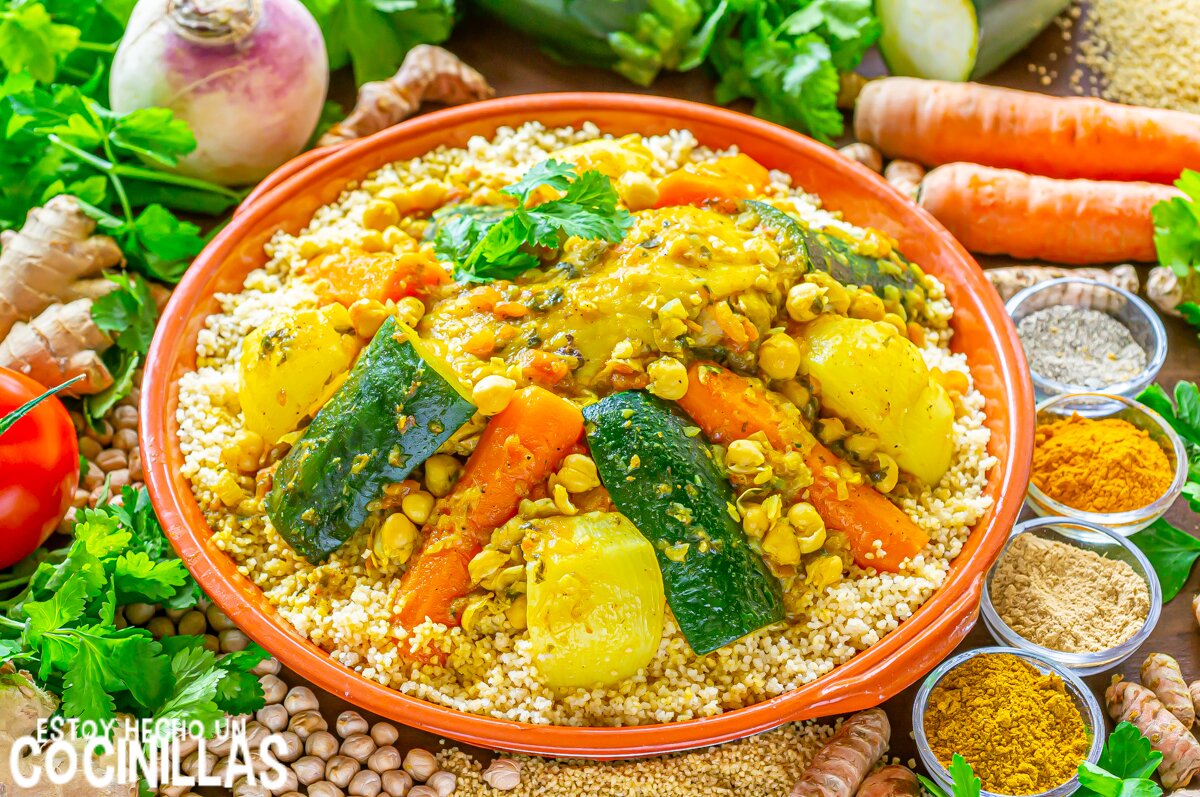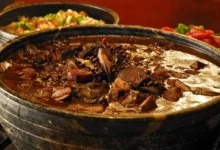Step into the enchanting world of Cuscus, where mystery and fascination intertwine! Are you ready to embark on a journey that will unravel the secrets of this captivating creature? From its elusive nature to its unique characteristics, we are here to guide you through every step of your exploration. Whether you’re a wildlife enthusiast or simply curious about these remarkable creatures, this complete guide will provide you with all the knowledge you need. So, let’s dive deep into the mysterious realm of and discover what makes them truly extraordinary!
What is Cuscus?
What is Cuscus? Well, prepare to be amazed! scientifically known as Phalangeridae, is a nocturnal marsupial found in the lush rainforests of Australia and Papua New Guinea. Their adorable round faces and fluffy bodies resemble a cross between a teddy bear and a monkey.
These intriguing creatures are famous for their adaptation skills. Their large eyes provide exceptional night vision, allowing them to navigate the darkness quickly. And those fantastic claws? They help climb trees effortlessly, making them true masters of arboreal living.
But what truly setsapart from other animals? They can blend seamlessly into their surroundings. Their fur comes in various colors ranging from gray to brown and even reddish hues – perfectly matching the foliage around them. This incredible camouflage helps protect them from predators while they sleep during daylight hours.
Cuscus have also developed unique adaptations when it comes to reproduction. Like other marsupials, females possess pouches where they carry their young ones after giving birth. These adorable joeys stay nestled inside until they are fully developed and ready to explore the world independently.
Now that we’ve scratched the surface of this fascinating creature, let’s dive deeper into how exactly these elusive beings operate in their environment – How DoesWork?
How Does Cuscus Work?
Cuscus is a fascinating creature that inhabits the lush forests of Southeast Asia and Australia. But have you ever wondered how this mysterious animal works?
First and foremost, are arboreal marsupials, meaning they spend most of their lives up in the trees. Their bodies are perfectly adapted for life in the canopy, with long limbs and sharp claws allowing them to navigate through branches easily.
One of the most exciting aspects of how works is their unique digestive system. These creatures have a prolonged metabolism, allowing them to survive on a diet mainly of leaves. They possess a complex fermentation chamber in their stomachs that helps break down challenging plant matter and extract as many nutrients as possible.
In addition to their feeding habits also have some intriguing behaviors regarding reproduction. Females typically give birth to one or two young at a time, then crawl into her pouch, where they will continue to develop until they are ready to venture out independently.
The way works within their natural environment is truly awe-inspiring. From climbing effortlessly among tree branches to efficiently digesting leaves for sustenance, these animals have evolved remarkable adaptations that allow them to thrive in the forest canopy.
So, next time you find yourself exploring the wonders of nature, take a moment to appreciate just how intricately designed these creatures are!
What Can You Do With Cuscus?
What Can You Do With Cuscus?
With its adorable appearance and unique characteristics, can be a fascinating addition to your life. But what can you do with this creature? Let’s explore the possibilities!
First and foremost, many people choose to keep as pets. Their friendly nature and low-maintenance requirements make them ideal companions for animal lovers of all ages. Just imagine having an exotic marsupial climbing around your home!
If you’re feeling adventurous, meat is also a popular delicacy in some cultures. Its tender texture and mild flavor make it perfect for various dishes. Whether grilled, stewed, or stir-fried, meat adds an exciting twist to any meal.
Furthermore, fur has long been prized for its softness and durability. It is commonly used in the fashion industry to create luxurious garments such as coats, hats, and accessories.
In addition to being kept as pets or consumed for culinary purposes, are sometimes used in scientific research due to their unique biology. Scientists study their reproductive habits and behavior patterns to gain insights into marsupial evolution.
So whether you want a furry friend by your side, are curious about exploring new culinary experiences, or even have a keen interest in scientific inquiry – the possibilities with are endless! So why not dive into the mysterious world of these fascinating creatures?
What Does Cuscus Eat?
What do Cuscus eat? This is one of the most fascinating aspects of these mysterious creatures. Cuscus have a varied diet that consists mainly of leaves, fruits, and flowers. They are naturally herbivores, meaning they don’t consume any meat or animal products.
In the wild, Cuscus can be found foraging for food in the treetops of their natural habitat. Their sharp teeth and strong jaws enable them to chew through thorny vegetation easily. Their long tongues are perfect for reaching deep into flower buds or extracting nectar from fruits.
One interesting fact about Cuscus is that they have a specific preference for certain types of leaves. They tend to favor young and tender leaves over older ones because they are easier to digest and contain higher levels of nutrients.
In addition to plants, some species of Cuscus also feed on tree bark and mosses. These additional food sources provide them with essential minerals and fibers that aid digestion.
It’s safe to say that Cuscus leads a predominantly vegetarian lifestyle, feasting on various plant-based delicacies in their lush forest homes. It’s truly remarkable how these animals have adapted to thrive solely on what nature has provided them!
How to Breed a Cuscus
Breeding a Cuscus can be an exciting and rewarding experience. These unique creatures have captured the fascination of many animal enthusiasts, and producing them allows you to contribute to their conservation efforts. So, how do you go about breeding a Cuscus?
It’s essential to create the right environment for your Cuscus. They thrive in spacious enclosures with plenty of climbing structures and hiding spots. Mimicking their natural habitat is crucial for their well-being.
Next, ensure that you have a suitable pair of Cuscus for breeding. It’s essential to choose healthy and genetically diverse individuals to promote strong offspring.
To encourage successful mating, provide your Cuscus with proper nutrition and a balanced diet. Their daily meals should include fresh fruits, vegetables, leaves, and high-quality pellets.
Monitor the behavior of your Cuscus closely during the breeding process. Look out for signs such as increased interaction between the pair or courtship behaviors like grooming or vocalizations.
Once mating has occurred, carefully observe any changes in your female Cuscus’s behavior, as this may indicate pregnancy. Provide her with extra care during this time by offering additional nesting materials and ensuring she has access to quiet spaces.
Breeding a Cuscus requires patience and dedication, but witnessing new life emerge is incredibly rewarding! Remember that every animal is unique, so adjusting your approach based on their needs is essential.
When to Harvest a Cuscus
When to Harvest a Cuscus
Harvesting a cuscus is essential in breeding and utilizing these fascinating creatures. Knowing the right time to reap can ensure that you can make the most out of your efforts.
The timing for harvesting a cuscus largely depends on its age and size. Generally, it is recommended to wait until they have reached maturity before attempting to gather them. This ensures they are fully developed and ready for consumption or other uses.
Observing their physical characteristics is one way to determine if a cuscus is ready for harvesting. An adult cuscus typically exhibits signs such as fully formed limbs, well-developed fur, and a healthy body weight.
Monitoring their behavior can also provide valuable insights into when it’s time to harvest. If you notice increased activity levels or changes in feeding patterns, this may indicate that the Cuscus has reached an optimal stage for harvesting.
It’s essential to take time with the process and allow the Cuscus enough time to grow and develop properly. Premature harvesting can result in smaller yields or lower-quality products.
Being patient and observant can ensure you harvest your cuscuses at the right moment, maximizing their potential use and enjoyment. So keep an eye on their growth progression and behavior – it will ultimately lead you towards a successful harvest!
Conclusion
Conclusion
In this complete guide, we have delved into the mysterious world of Cuscus and uncovered its fascinating aspects. From understanding what Cuscus is to learning how it works, we have explored the various facets of these unique creatures.
Cuscus are remarkable animals with incredible adaptations for survival in their natural habitats. Their ability to climb trees with agility and camouflage themselves among foliage genuinely mesmerizes. They play an essential role in maintaining the balance of ecosystems by dispersing seeds and controlling insect populations.
Despite their elusive nature, Cuscus can be an excellent addition if you consider keeping them as pets or breeding them for conservation purposes. By providing them with suitable enclosures, proper nutrition, and ample space to roam, you can ensure their well-being and contribute to their preservation.
Remember that Cuscus primarily feeds on leaves, fruits, flowers, and occasionally small insects. Providing them with a balanced diet that mimics their natural food sources is crucial.
Breeding Cuscus requires careful planning and attention to detail. Creating a conducive environment for reproduction involves providing nesting areas and monitoring mating behaviors closely. With patience and dedication, successful breeding can help increase the population of these enchanting creatures.
When it comes time to harvest your cultivated cuscuses’ produce or check on wild cucuses’ growth progress in their habitat – timing is critical! Understanding when they are at peak ripeness ensures optimal taste and quality.
As we conclude our exploration into the mysterious world of Cuscus, one thing remains clear – these enigmatic animals hold a special place in our hearts and ecosystems. By appreciating their beauty from afar or actively participating in conservation efforts, we can all contribute towards preserving this captivating species for future generations to marvel at.
So, let us continue celebrating the wonder of nature’s creations like Cuscus while striving towards coexistence within our intricate planet! Let the mysteries of the Cuscus inspire us to protect and cherish all living beings.


